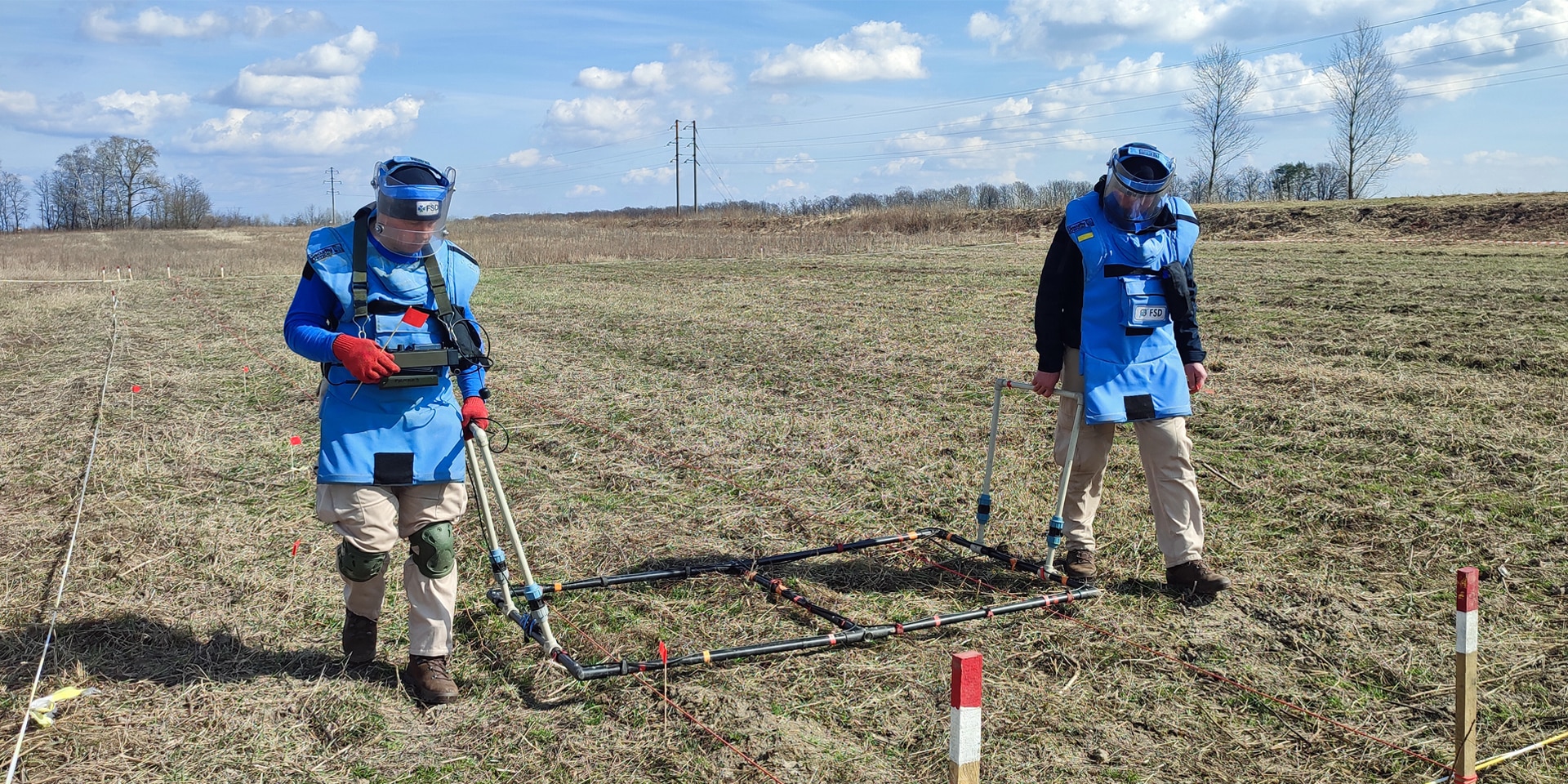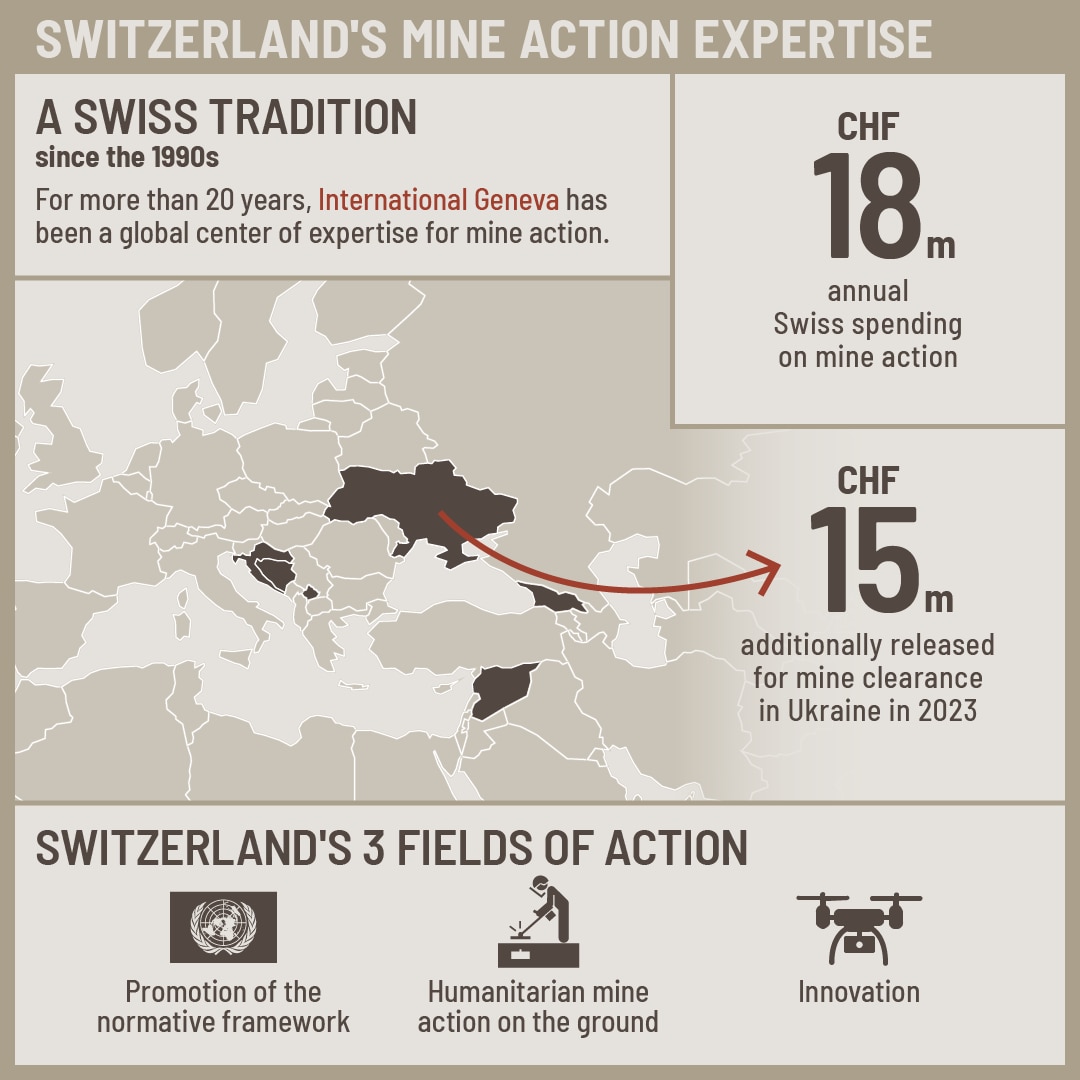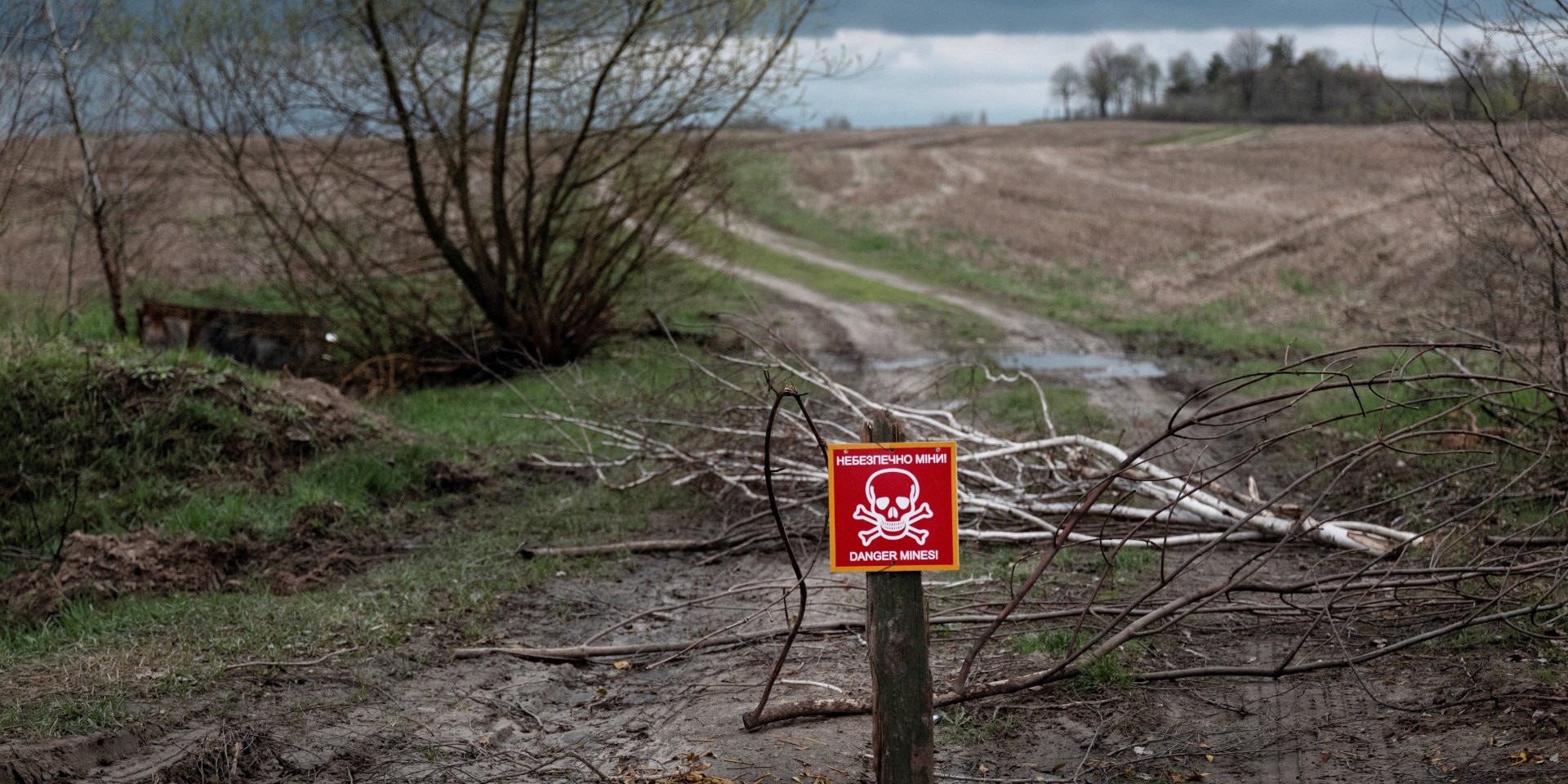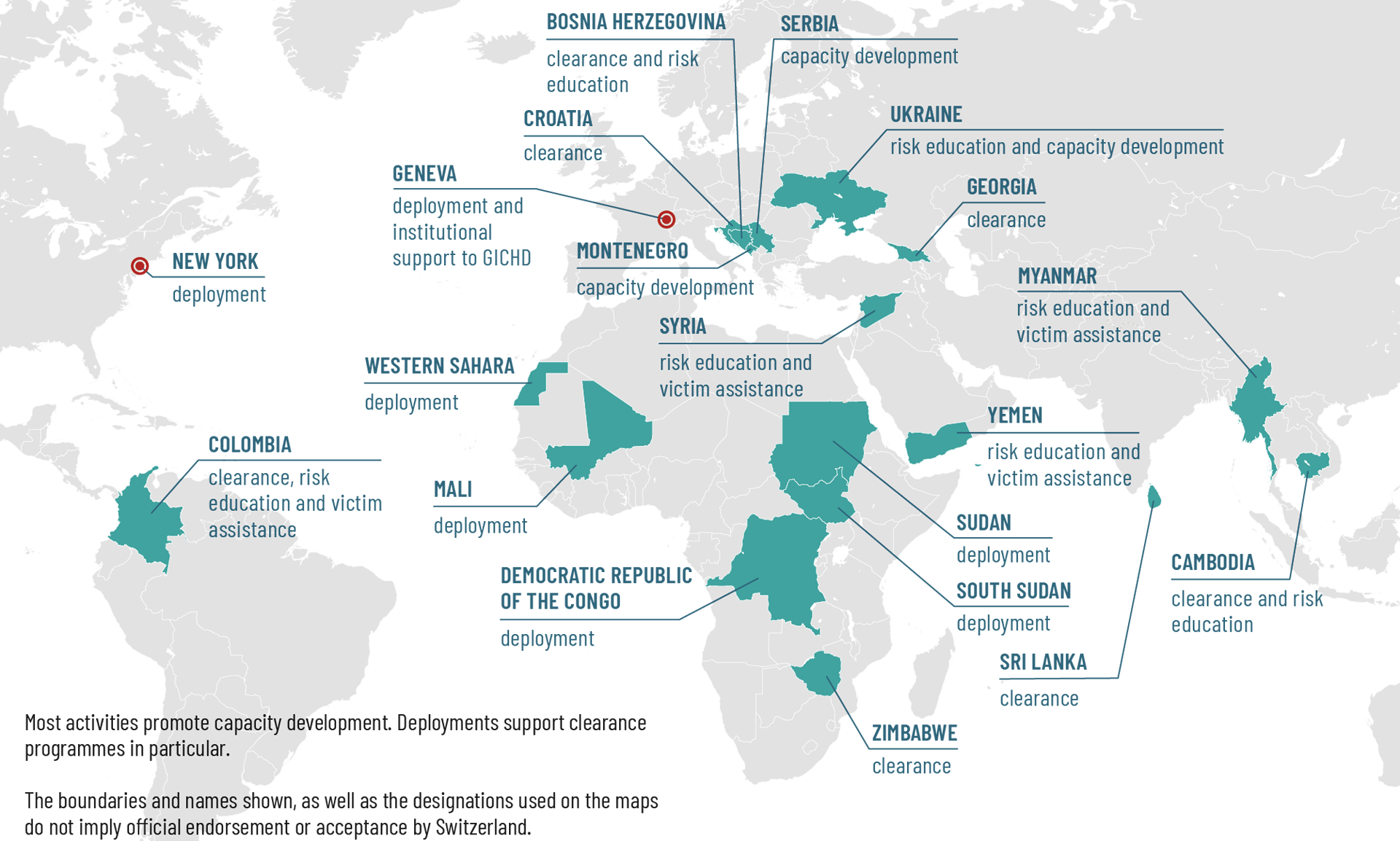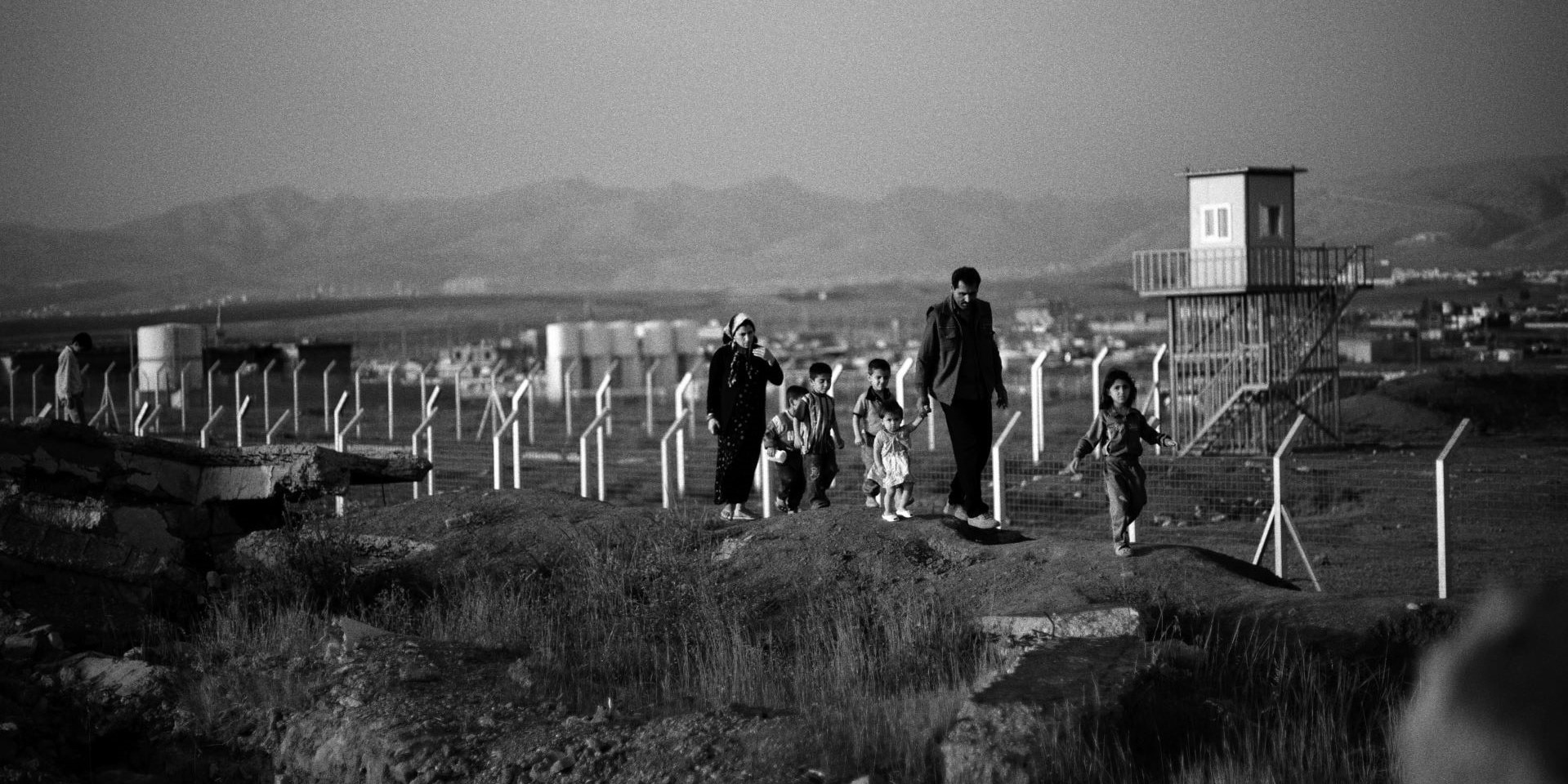Humanitarian demining, a cornerstone of Ukraine's recovery
The Ukraine Recovery Conference (URC) in July 2022 marked the start of the reconstruction process in Ukraine. The conference in Lugano provided an opportunity to coordinate international support and discuss the priorities, which include humanitarian mine action. The clearance of vast minefields in the worst affected areas in the east and south of the country is essential to allow farming to resume. Mine action is needed to regenerate the country's economy and provide safe access to crucial electricity, water and transport infrastructure. For refugees and those displaced within Ukraine to be able to return home, contaminated areas must be cleared of mines and explosive ordnance.

